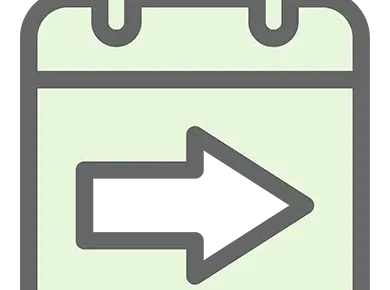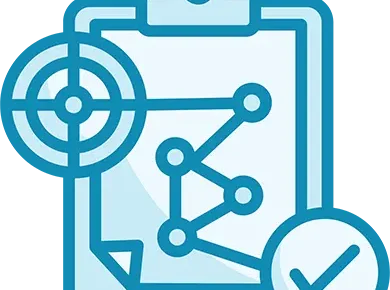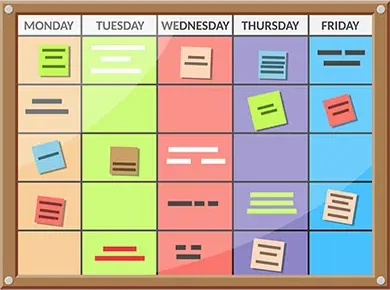What is the POSEC Time Management Method
The POSEC method offers a strategy that can be applied to improve time management skills. It is worth noting that it is in fact a strategy and not a method. This is due to the fact that POSEC does not tell us step by step what to do, but offers us a general framework, a template on which to act.
This time management strategy starts from the idea that, first of all, a person must become fulfilled as an individual. Only then will people have the possibility to also contribute to the development of the society they belong to.
For this reason, POSEC provides a framework for organizing tasks, depending on their importance and priority in relation to our goals.
Properly applied, the prioritization proposed by this strategy also balances and maintains a very good balance between personal and professional life.
The POSEC method mirrors Maslow’s hierarchy of needs. This means that the results obtained as we apply the strategy will lead us in an upward movement to the top of Maslow’s pyramid
POSEC method VS Maslow’s pyramid
Maslow’s hierarchy states that an individual can advance toward his own development only if certain conditions are initially met. According to this, a person initially must meet his necessities for food and safety, then those of socialization. When he reaches this level, he is considered to have the opportunity to fulfill his needs of self-respect and status in society. Only after all these are fulfilled, the person can strive for mastery and independence.
Mirroring this, the Posec Method states that a person should put his own goals first and act in such a way as to achieve them. It is considered that only when the individual fulfills his own development does have the capacity and the possibility to direct his attention to the society of which he is part.
To better understand the principles of the two pyramids, we explain in the following what are the levels and the direction of evolution proposed by each of them.
Basic principles of Maslow’s pyramid
The American psychologist Abraham Harold Maslow (April 1, 1908 – June 8, 1970) claims in his book Motivation and Personality first published in 1954 that for individuals to thrive and excel, a health-fostering culture must be created
. In this paper, he created a pyramid of human needs that must be met before people become motivated to achieve higher-level needs.
At the base of this pyramid are the Basic needs which include the first two levels:
1: Physiological
These refer to universal basic human needs and include providing for oneself food, water, and the living conditions desired and expressed through shelter or clothing. According to the creator of this theory, a person who fails to meet these basic needs is unlikely to move to the next level, much less to tend to self-actualization.
2: Safety
This level includes environmental, emotional, physical, personal, and financial needs. That is to say, everything you need to be able to live and work without worrying about the next day. These can be taken into account by a person, only after meeting the needs of Level 1, and the transition to Level 3 depends on their fulfillment.
Above these are the Psychological needs which also are arranged on two levels:
3: Social belonging
This includes the need for people to be part of social groups. Whether they are small, such as family, or larger and include friends or colleagues, people need to feel loved and accepted. It should be noted that, in the case of some people, the level of social belonging may come after self-esteem, the latter being a much more important need for them.
4: Esteem
Once all the above have been met, people need to be appreciated by those around them. They want to be paid attention and their status recognized and, why not, to become famous. At the same time, the need for self-respect is accentuated. The latter need refers to self-confidence, strength, mastery, independence, and freedom).
At the top of the pyramid is what the author defined as the desire for self-fulfillment, namely the tendency for him (the individual) to become actualized in what he is potentially. This tendency might be phrased as the desire to become more and more what one is, to become everything that one is capable of becoming
5: Self-actualization
A person will get here after he has managed to meet his needs from previous levels. It is the level at which man will want to fulfill his full potential, regardless of the field. Some people may have a strong, special desire to develop certain talents and abilities, and others may want to start a family. The important thing is that it is now possible for people to set goals and achieve them.
This hierarchy shows us that we must first meet basic needs and then psychological needs, to reach the stage of self-actualization in which we will have the opportunity to set and deal with our goals.
The basic principles of the POSEC method
The POSEC method mirrors the principles of Maslow’s hierarchy. This means that personal goals and their fulfillment are put first. Then, starting from this, the evolution through all the other levels follows. The name of the method is given by the initials of the notions that define it and which it is based on: “Prioritizing by Organizing, Streamlining, Economizing and Contributing.”
The hierarchy offered by the Posec strategy also has 5 levels but the approach is different. In this case, the starting point is the goals of each individual.
1: Prioritize (Goals and time)
This level includes our Goals and the Time needed to accomplish them.
Prioritization refers to the fact that first of all, we must establish what our goals are. Also, just as important, to estimate and make sure that we allocate time with priority to those actions that lead us to their fulfillment.
And we must remember that this principle applies regardless of whether we are talking about prioritization in the longer or shorter term.
We can take into account the goals of our life or just the goals for the next day. The important thing in both situations is to establish what we want to achieve and prioritize everything so that we do exactly that.
2: Organize (Family and Finances)
Once we have set our priorities in terms of goals and time, we will be able to move to the organizational level. Here we’ll have to provide structure for all the activities we have to perform both in our personal and professional life. We must keep in mind that as a whole, they are also contributing to achieving our goals.
Most likely we would not be able to get there without a pleasant Family atmosphere, without the stability of our Finances, or without the security of the environment in which we live. Therefore, on our way to success, we must make sure that we organize both the activities that directly influence the achievement of goals and also all the related activities.
Like the first level, it can be applied to both long-term plans and activities that we have to do daily. This precisely because every day, apart from the activities that are strictly related to our goals, we must take care of our financial situation and our family’s well-being.
3: Streamline (Work and Chores)
This is the POSEC Method level where we make sure to find the most efficient and effective methods for carrying out all activities. And, in this case, we especially refer to those simple, routine, but time-consuming activities such as Work and Chores. Certainly, we don’t even like to do some of these activities, but even in this situation, we still have to take care of them on a regular basis. Therefore, a very useful solution would be to somehow find the possibility to automate them so as to make the whole process more efficient.
But if we use the dishwasher, respectively the washing machine, then we will be able to use in a much more productive way the time we free up by automating these two activities.
4: Economize (Pastimes and Socializing)
The level at which the POSEC Method tells us to Economize refers to the time we allocate to various activities that usually have nothing to do with our goals. Usually, this is where Pastimes and Socializing are included. Under no circumstances should we understand that we have to give up these activities. It’s just about being more careful with the amount of time we spend on them.
Most of the time we really enjoy these activities, but they are certainly never urgent. Therefore, if we are to respect the Prioritization proposed by Posec Method at Level 1, we should deal with them only after we have solved the tasks directly related to our goals, family, finances, or daily chores.
5: Contribute (Social Obligations)
Once we have gone through all the previous levels, we will be able to give back to our society or give something to those who may need our help. Even if the actions included here are named Social obligations, it is more about the things we do for others and these things we do most of the time with all our heart.
Maybe you write a book to help other people make the right decisions about starting a small business. Or maybe you choose to volunteer for certain causes. This is the level at which you can share value in the community around you.
If we look at this level in terms of daily activities, maybe at the end of the program you are talking to the colleague you saw sad today, or maybe on the way home, you bring some food to your old neighbor.
Working with the POSEC Method
First of all, we emphasize again that POSEC is a time management strategy and not a method. Therefore, it gives us broad lines on which to act upon, but not exact instructions.
But, if we adopt the proposed framework then surely in addition to achieving our goals we will also be able to create and maintain a perfect balance between personal and personal life.
As we have seen, the emphasis is on Prioritizing the goals we want to achieve and the time we need to devote to all the related activities. Noteworthy, it’s about our goals in general, whether they are long-term or short-term, for personal or professional life. Whatever they are, the important thing is that they will determine our development as individuals.
To achieve our goals, we will have to Organize not only all the activities related to them but also those that are not directly related to our goals. All this in order to have the opportunity to do everything we set out to do in a pleasant and safe environment from all points of view (for example economic, family, environmental).
For the same purpose we should be as productive as possible and increase our efficiency by Streamlining the processes, especially in the case of routine activities, and by Economizing on those activities that, although enjoyable, do not necessarily help us achieve our goals.
Once all this is done, we will have the opportunity to Contribute to our society, that is, to share with the whole world whatever we want and is at hand.
Now that you have a clear understanding of the POSEC Method, the next step is to see how it fits within a complete system for managing your team’s workload. While this method is powerful on its own, true profitability and balance come from an integrated approach. The Posec Method is one of 12 proven workload management strategies for teams that provide the visibility and control needed to scale a service business effectively. Explore the full framework to build a system that stops profit leaks and prevents team burnout.






